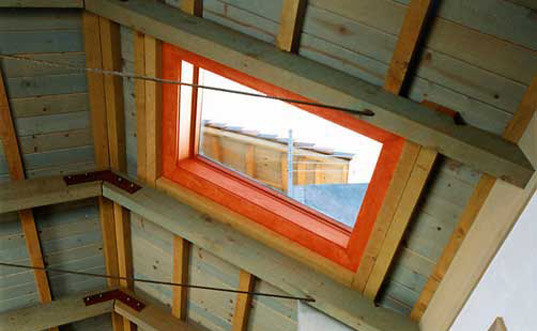Feeling good in our homes or offices isn’t just a matter of having a beautiful space. No matter how fabulous your furnishings, a poorly designed indoor environment can literally make you sick. Building green means considering not only the environmental impact of materials and construction, but also the physical and psychological health of the occupants.
Indoor Environmental Quality (IEQ) addresses the subtle issues that influence how we feel in a space. It’s not some airy-fairy concept; these are scientifically proven facts. Companies that make the move to green buildings have employees with lower turnover rates, fewer sick days and higher productivity; schools demonstrate higher test scores, lower absenteeism and heightened academic enthusiasm among students. At home, of course, these factors are vital, since the way we feel at home affects every area of our lives.
Some can argue that it is not only desirable, but also a fundamental human right to live and work in spaces with healthy indoor environments. Buildings enhance people’s lives when they permit ample air circulation, maintain clean air and comfortable temperatures, and allow individuals to have a sense of control over their own indoor experience.
Some can argue that it is not only desirable, but also a fundamental human right to live and work in spaces with healthy indoor environments. Buildings enhance people’s lives when they permit ample air circulation, maintain clean air and comfortable temperatures, and allow individuals to have a sense of control over their own indoor experience.

1) Design a sense of control over personal space.
People generally experience a greater sense of well being when they can make easy adjustments to their immediate space, such as through operable windows, skylights and sliding doors. Particularly in shared spaces, like family homes and offices, it’s important to feel that the indoor environment can meet your own needs. Climate controls designed into multiple rooms can also promote comfort and conserve energy by allowing temperature changes only where needed.
Studies show that employees are actually far more productive in an office space that permits awareness of outside conditions. Isn’t it nice to be able to look out on a tree or garden — or better yet to step out for a few minutes for mid-day stress reduction?

2) Help buildings breathe better.
Spaces that are closed up like hermetically sealed boxes can cause pollutants to accumulate to levels that can pose health and comfort problems and contribute to Sick Building Syndrome. Instead, naturally ventilate spaces as much as possible without compromising reasonable humidity levels. Variations in temperature are also important — spaces kept at a constant temperature do not mimic our natural internal fluctuations, and can cause a sense of malaise.
The building envelope can provide cross ventilation through narrow floor plans and openings in floors and ceilings that allow vertical circulation. Solar chimneys and other types of stack ventilation draw heat up and move air even when there is no breeze outdoors.
When using mechanical ventilation, make sure that the “exchange rate” is high, meaning that the majority of air in a space is coming from the outdoors, thereby reducing the amount of pollutants inside. Fan-powered ventilation is recommended to remove air from single rooms, such as bathrooms and kitchens, where the pollutant levels from human activity, cleaning agents and mold are high. Air handling systems use fans and ductwork to constantly remove indoor air and distribute filtered and conditioned air to strategic spaces throughout a building.
3) Reduce indoor air quality problems at the source.
Identify potential sources of indoor pollution that stem from design choices, existing conditions, and lifestyle activities. Moving into a new home, remodeling a space, and bringing in new furniture can expose inhabitants to abnormally high levels of volatile organic compounds (VOCs), which are the toxic gases, such as formaldehyde, released from everyday materials that are responsible for contributing to cancer, asthma, fatigue, and other ailments. Formaldehyde is found in household products and fuel-burning appliances, “permanent-press” clothing and draperies, and many paints, coatings and glues. The most significant source is pressed wood products for cabinetry, furniture, and subflooring.
4) Eliminate poisons and beware of harmful pest control substances
Use non-chemical methods of pest control when possible. If the roach won’t take to being led outside with a nudge from a newspaper, then be sure to ventilate the space well after using a pesticide. Natural pesticides have fewer harmful side effects and break down more quickly in the environment than synthetic chemicals do. Don’t forget that they are still poisons and harmful to humans. Try Poison-Free Ant & Roach Killer, which uses food-grade Mint Oil to kill bugs in seconds. It’s also a good habit to frequently wash indoor plants and pets, which attract bugs indoors.
To control pollution already existing in a house, test basements for radon, and other spaces throughout for excessive dampness and mold. Prevent mold growth, which also contributes to asthma, fatigue, and other ailments, by preventing the accumulation of water at drainage systems and at areas where mechanical ventilation condensates. Also inspect the house for leaky pipes, windows, skylights and other areas to eradicate problems from mold. The Environmental Protection Agency’s website contains strategies for improving the quality of indoor air in your home.

No comments:
Post a Comment